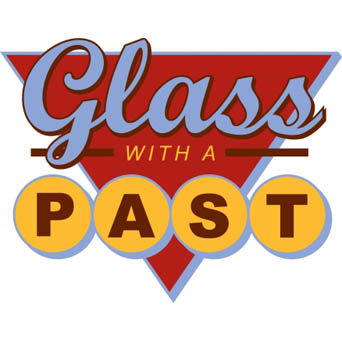 A question that shows up very frequently in my organic search terms is: What CoE is Bottle Glass? The answer is fairly easy – 82 – and it matters not at all. If I try to melt a clear wine bottle with a brown wine bottle, it won’t work. Even though both bottles are nominally 82 CoE, the brown glass has a higher viscosity, which means the glasses have a different degree of liquidity at the same temperature.
A question that shows up very frequently in my organic search terms is: What CoE is Bottle Glass? The answer is fairly easy – 82 – and it matters not at all. If I try to melt a clear wine bottle with a brown wine bottle, it won’t work. Even though both bottles are nominally 82 CoE, the brown glass has a higher viscosity, which means the glasses have a different degree of liquidity at the same temperature.
Glass formulation has always been a strict science. However, until fusible art glass came on the scene, CoE wasn’t really a term that got thrown around. For the most part glass objects were made in a factory setting, where thousands of bottles were made from the same carefully formulated batch created from raw materials. Float glass factories make a continuous ribbon of float glass year round from the same continuously replenished furnace.
Obviously, all of those bottles from the same furnace batch will have the same CoE, as they came from the same origin.
Just as obviously, all of the float glass from that continuous river of float glass will be have the same CoE.
Fusible art glass gives artists a chance to pick up the creative process halfway through, after the glass has been made, but still in a basic sheet form. You can see that CoE becomes a critical factor in that situation, although other factors still apply.
I think the real question that people are asking me is: can I fuse all wine bottles together, or mix window glass?The answer to that is a little more complex. CoE is a measurement of how much glass expands upon melting and cooling. What CoE doesn’t measure is the speed of melting or other characteristics such as viscosity.
If a project is large enough that it requires mixing bottles, there are a couple steps that you can take to make your project more likely to be successful (notice that there is no guarantee).
- use all one size and brand of bottles. For instance, Jameson Whisky or Skyy Vodka. Both come in a branded bottle that is specially made for the manufacturer, increasing the likelihood of all the bottles coming from the same manufacturer.- test! If your project requires bottles to be cut into pieces, it is well worth your time to test each bottle glass against all of the other bottles you will be using.
- grind. Reducing your bottles to fine frit allows you to bypass the CoE by reducing the surface area of the glass to as small of a particle as possible. The amount of expansion of a sugar sized grain of glass is so small it is nearly impossible to measure.
- mix. Melting two very similar types of glass into a liquid and mixing them will result in a third type of glass with a unique CoE. (refer to Boyce Lundstrom’s excellent book ‘Glass Casting and Mold Making’ for more details.)
- be philosophical. Mixed glass fusing produces more failures than success. If you truly want to be able to mix glasses reliably, treat every firing as a test and take copious notes, including bottle brands, before and after photos, and consciously try to find a pattern in the successes.
Because mixing bottles is a complicated process, and because the variety of bottle glass is wide, I always limit the projects and tutorials to a single bottle for the sake of simplicity.
For more information about CoE and Compatibility, I recommend reading the Bullseye Technotes 3: Compatibility of Glasses. It is an excellent run down of factors that pertain to glass fusing and casting, and applies both to art glass and to bottle/float glasses.
